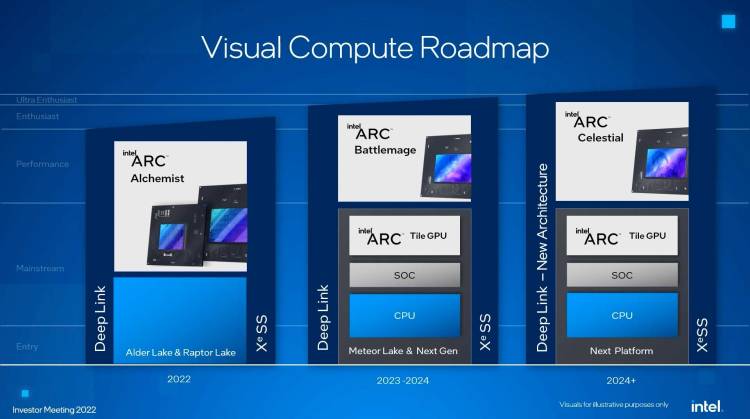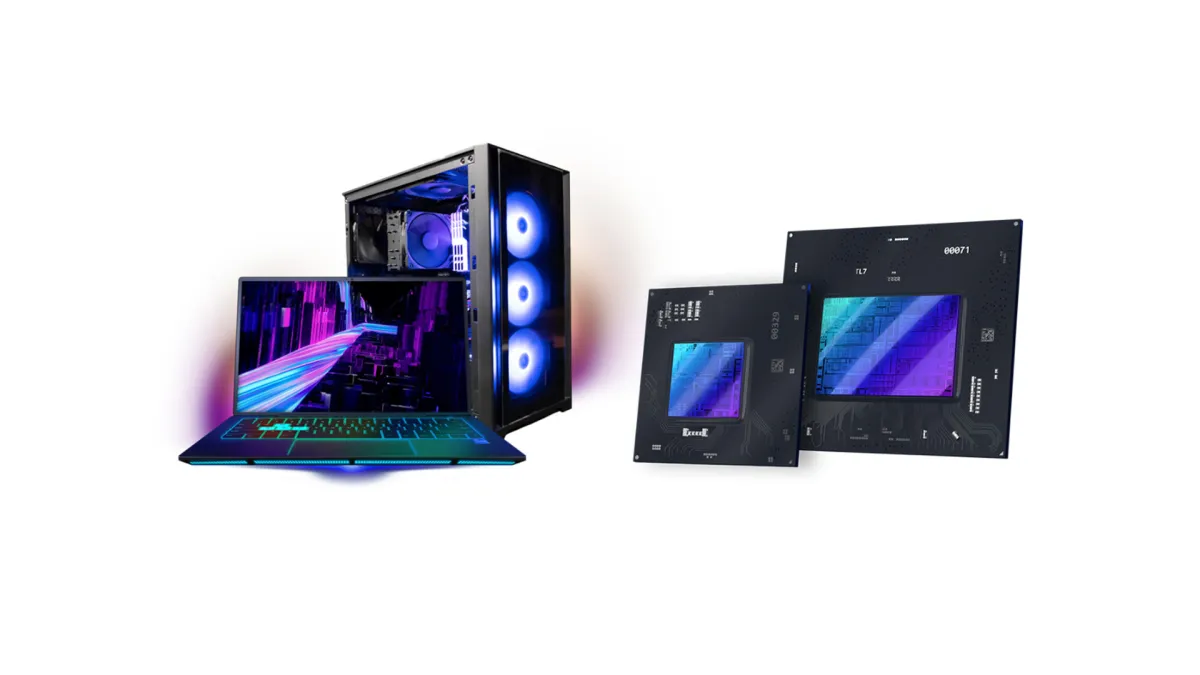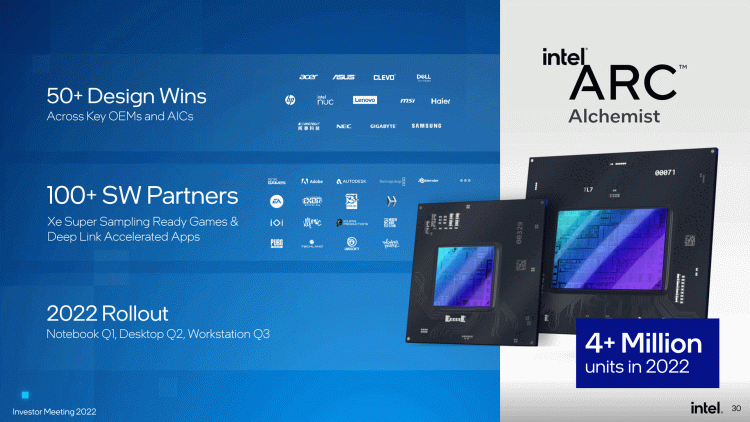If you’re intrigued about the upcoming Intel ARC Alchemist graphics card launch, today’s details about the updated release window for desktop models are significant. During the latest investor’s update, Intel shared a basic schedule for how it plans to release GPU products throughout the rest of 2022. Specific details were not mentioned, but we now know that laptop/notebook models will arrive before end of Q1 (March 31), desktop graphics cards will arrive in Q2 (April, May, and June), and workstation models will arrive in Q3. Furthermore, Intel committed to shipping at least four million units by the end of the year.
This official announcement coincides with what we’ve been hearing from unofficial channels lately. Just last week, several sources with inside knowledge said the same thing about Intel’s release schedule. Intel’s previous commitment was to a Q1 release for ARC Alchemist graphics cards, though the language remained unclear as to what exactly could release. In that sense, it seems that Intel will still technically fulfill its original promise. The revision to the desktop model release window is a significant deal though, and there’s still much we don’t know about the Alchemist lineup.
Specific information such as which models will debut, specs, pricing, availability, and performance remain unconfirmed. It’s all a little strange at this point, seeing as the first Intel GPUs are supposed to launch in laptops six weeks from today. This of course hasn’t stopped us from reporting on leaks such as board designs and gaming performance estimates, but a full-fledged reveal would be great any week now.
Can Intel end the graphics card shortage?
Interestingly enough, Intel also decided to reveal how many GPU units it expects to ship this year. The press release notes a combined total of four million plus GPUs. This may sound like a decent number at face value, but it’s unfortunately not going to be enough to solve the graphics card crisis if you were wishfully thinking that it might. For reference, the Jon Peddie Research group estimates that the GPU AIB industry shipped 12.7 million units in just Q3 of 2021. Furthermore, Intel refers to total its entire lineup that includes mobile, discrete desktop, and workstation GPUs. It’s not a bad start, and more graphics cards are certainly welcome to help alleviate the global strain, but demand is still simply too high for one company to satisfy.
Pushing other boundaries
In addition to the news about the Alchemist release update, Intel’s press release also mentioned a few other interesting bits about the future of its ARC GPU and graphics card endeavors. The following roadmap offers a glimpse at what we can expect from Intel from CPUs to GPUs up to 2025. As it currently stands, the second generation of ARC cards, known as Battlemage, will arrive in 2023-2024. Design work has also begun on the third generation of gaming GPUs, known as Celestial. Those are expected sometime in 2024-2025.

Considering that AMD, and likely Nvidia too, will have powerful new GPUs ready by the end of this year, this puts Intel in a bit of a tough spot where it will need to play catch-up. These slides from Intel are quite vague as to when exactly subsequent generations of GPUs will launch, but Team Blue’s presence in the market should at least help to satisfy demand.
Finally, Intel noted in the press release that it will move on to advanced manufacturing nodes at a brisk pace. The Intel 4 node will feature EUV to improve processor power efficiency and be ready by the second half of this year. By the second half of 2023, the Intel 3 node will be ready. By the first half of 2024, the Intel 20A node will be ready. And then by the second half of 2024, the Intel 18A node will be also be ready. Each successive generation will bring improved efficiency and performance, and just for the record, this is an incredibly aggressive manufacturing process roadmap.
Intel currently has contracts with TSMC to produce the ARC GPUs on one of the TSMC N6 nodes, but Intel clearly wants to put an end to that as soon as possible so it can be back in control of the full manufacturing process… and profits.
If you thought today’s GPUs were fast…
If everything goes well for Intel, we could be on the verge of a new age of computing performance, as these are some serious gains promised over a very short timeframe. Intel suffered a rough period of stagnation over the past few years, which must further be emphasized to make this point clear. Based on everything the company’s signaling right now, we could be laughing at today’s best graphics cards (and CPUs for that matter) in a few short years. Intel sounds confident that its Alder Lake CPUs and ARC GPU releases are just the beginning of good things to come.
While the semiconductor industry is in a bit of a pinch still, we can at least look forward to this promising outlook from one of the world’s biggest chip makers. Serious competition and innovation are sure to follow.








Published: Feb 17, 2022 08:10 pm